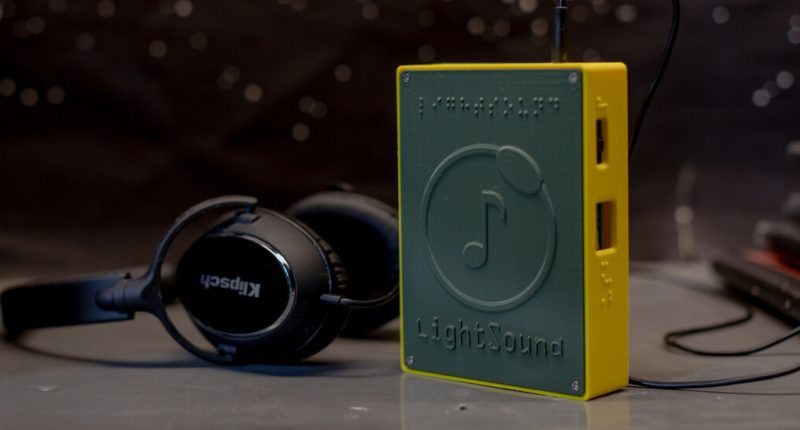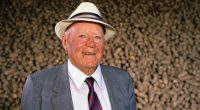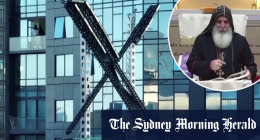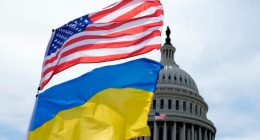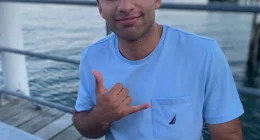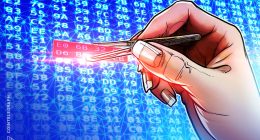On Aug. 21, 2017, Kiki Smith’s teenage sons giddily prepared to watch the partial solar eclipse in Rochester, N.Y. As Ms. Smith listened to their chatter, she felt excluded.
“I felt very alone,” she said. Ms. Smith was diagnosed with a degenerative condition as a child and lost the last of her vision in 2011. The local buzz around the eclipse, and the national media attention, unexpectedly touched a nerve.
The eclipse “was about experiencing a historic moment in community, and I wasn’t part of that,” she said.
Ms. Smith, 52, who works for a community development organization in Rochester, determined to do things differently for the April 8 total eclipse that is passing through her city. She is helping to organize a public gathering that prioritizes accessibility for people with vision loss. Her event will include specially designed devices named LightSound that translate changing light intensity into musical tones, allowing blind and visually impaired people to listen as the sky grows dark and then brightens again.
During this eclipse, Ms. Smith said, “I will be with community. And I will have at my fingertips all of these fabulous resources to experience what I felt I missed last time.”
People across the United States with limited vision or blindness will experience the eclipse with the aid of about 900 LightSound devices distributed by a team led by Allyson Bieryla, a Harvard University astronomer.
The instrument was developed in 2017 by Ms. Bieryla, the manager of Harvard’s undergraduate astronomy lab and telescopes, and Wanda Díaz Merced, an astronomer who is blind and at the time was with the Harvard-Smithsonian Center for Astrophysics.
After learning about the needs of visually impaired astronomers, Ms. Bieryla outfitted the lab she manages with a printer that creates three-dimensional, tactile representations on heat-sensitive paper of images captured by telescopes. Dr. Díaz Merced had for more than a decade been conducting research using sonification, in which mathematical data is translated into sounds.
The two decided to create a device to sonify that summer’s eclipse. Daniel Davis, the director of Harvard’s science demonstration lab, produced a prototype.
On Aug. 21, as the total eclipse passed over her viewing spot in Wyoming, Ms. Bieryla streamed the sound from the device via the internet.
Dr. Díaz Merced was then in Cape Town as a research fellow with the Office of Astronomy for Development. During the eclipse, she shared the stream with students at the Athlone School for the Blind.
“When they heard it, they jumped and they clapped,” she said. “It was the first time they were able to listen to such an event, so it was very meaningful.”
Roughly the size of a paperback novel, LightSound contains a light sensor that measures the sky’s brightness in lux, or units of illumination. Inside the case, code on a microcontroller board assigns particular sounds to numerical ranges of lux. A synthesizer board then generates a flute sound for intense light, a clarinet sound that lowers in pitch as the light fades, and a slow, percussive clicking during the darkness of totality. Listeners use headphones or a speaker to hear the device’s sonification.
Ahead of the total solar eclipse that crossed Chile and Argentina on July 2, 2019, Ms. Bieryla’s team, funded by the International Astronomical Union, sent devices or their components to colleagues in both countries. At an event at the Santiago planetarium, organizers connected a LightSound device to an amplification system so the more than 1,500 attendees — among them, people who were blind — could hear it.
“It’s not only dedicated for the visually impaired,” said Paulina Troncoso, director of the undergraduate astronomy program at the Universidad Central Región de Coquimbo, who led the LightSound portion of that event. “It’s also for everyone.”
The team offers LightSound for free and has posted the computer code and instructions for building the devices online. Ms. Bieryla’s group continues to tinker with the product to improve users’ experience. For example, the 2017 prototype emitted a rather shrill tone. In 2018, Sóley Hyman, then a Harvard undergraduate, redesigned the device to incorporate the synthesizer board and developed the code for its flute, clarinet and clicking sounds.
One of Dr. Troncoso’s students experimented with reprogramming the board to use a simplified instrumental version of the 1997 Daft Punk song “Around the World.” In lowering light, the synthesized instruments switch off one by one, leaving only the sound of the drum machine.
Last year, Ms. Bieryla invited Elliot Richards, an engineer at Harvard, to redesign the device with a printed circuit board instead of a tangle of wires. The change makes building the devices much easier, and Ms. Bieryla and Ms. Hyman, who is now a graduate student at the University of Arizona, have taught volunteers to solder and assemble the materials at several workshops.
Once people understand how LightSound makes the eclipse accessible, they are eager to help, Ms. Bieryla said.
“That’s been heartwarming to me — just the amount of work that people have given to this project and the excitement around it,” she said.
On a balmy Saturday in March, a dozen volunteers sat hunched over tables in a classroom at the Austin Nature & Science Center in Texas, using soldering irons to attach components to the circuit boards. The acrid smell of hot metal wafted out the open door as the trill of a mockingbird in a nearby tree floated in. As volunteers tested their completed devices, the overlapping notes of flute and clarinet resembled the din of an orchestra tuning up before a performance.
Mark Sullivan, who works as a welder, learned about the workshop through the local astronomy club and decided to help. Mr. Sullivan had witnessed the August 2017 total solar eclipse in Nashville.
People like him who can see “just take it for granted, being able to look at the sun for the eclipse,” he said, adding: “You want to make sure everybody has the opportunity.”
Ms. Bieryla’s team received more than 2,500 requests for LightSound devices. She sent as many as she could to event organizers such as Ms. Smith in Rochester; to libraries, museums, universities and senior centers; and to schools for the blind.
In Austin, the Texas School for the Blind and Visually Impaired will host an “eclipse extravaganza” on April 8 with tactile diagrams of eclipses as well as LightSound devices. Yuki Hatch, a 12th grader at the school, said the LightSound device means she won’t have to rely on her limited vision to experience the total eclipse.
Ms. Hatch loves astronomy, and in October, she watched the annular eclipse that crossed through Texas. But she saw only a dot that dimmed and brightened.
The LightSound “will actually give me more information than what I can possibly see with my eyeballs,” she said.
Ms. Hatch plans to earn a computer science degree and develop technology NASA can use to send blind people to space.
When Ms. Smith was a freshman in college, she muddled through an astronomy course until her vision loss made it too difficult. The LightSound device signals an encouraging shift toward support and inclusion, she said.
Enabling those who can’t see an eclipse to hear it represents “an opportunity for kids to not give up on those kinds of things,” she added.
Also Read More: World News | Entertainment News | Celebrity News
